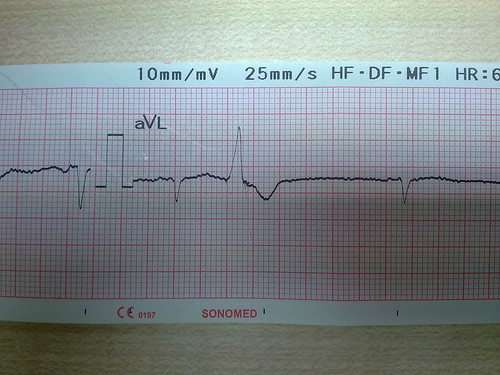Question: Is it possible to say what the cardiac axis might be just by looking at Lead aVL as shown above?
Answer: It is not possible to say exactly what the cardiac axis is but one can infer in this manner:
1. The current is moving away from aVL. Left axis is the state where the current is moving towards the left side in the segment beyond minus 30 degrees. Therefore lead aVL tells me that this is not left axis.
2. If the current is exactly minus 30 degrees (normal axis) or zero degrees (normal axis), or plus 30 degrees (normal axis), lead aVL should be having a net positive deflection because the electrical scatter is still towards aVL. Therefore the axis is not zero degrees or minus 30 degrees or plus 30 degrees.
3. If the axis is plus 60 degrees, lead aVL should have biphasic deflection (positive and negative deflections are equal) because plus 60 degrees is exactly perpendicular to Lead aVL. Therefore the axis is not plus 60 degrees either.
4. If the axis is plus 90 degrees (normal axis) or beyond 90 degrees (right axis), lead aVL will show a negative deflection because now the electrical scatter is truly away from aVL. Therefore the axis here may be normal (between plus 60 and 90 degrees) or right axis (beyond plus 90 degrees).
Question: Is the ventricular ectopic seen in the given Lead aVL, arising from the right ventricle (RV) or from the left ventricle (LV)?
Answer: If an ectopic beat starts in the RV, it will depolarise the RV first and the LV later. Hence a ventricular ectopic that originates from the RV will have a LBBB pattern. Similarly, a left ventricular ectopic depolarises the LV first and the RV later. Hence it will show a RBBB pattern. So, if a ventricular ectopic shows the LBBB pattern, it is a ventricular ectopic from the RV and if the ectopic beat shows a RBBB pattern, it is a left ventricular ectopic.
The ectopic beat in aVL here (a lead that looks at the left side of the heart) has an LBBB pattern. Therefore it is an ectopic beat that originates from the RV.
